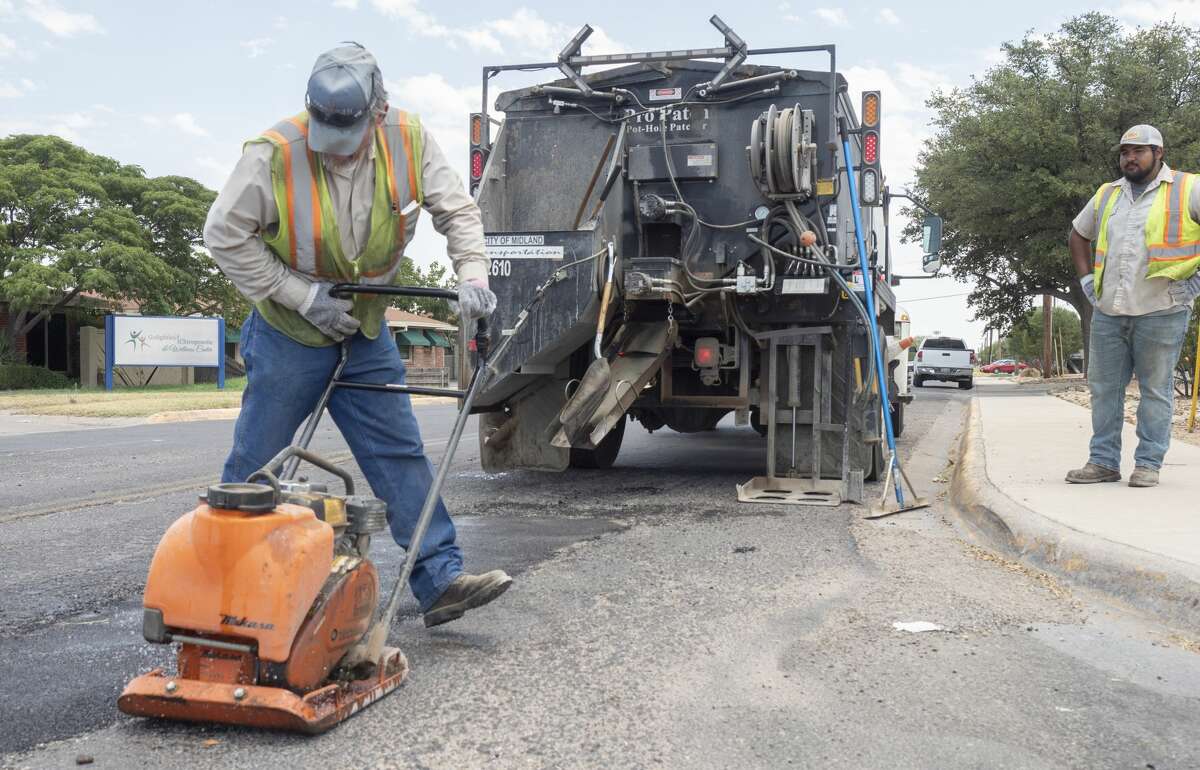
City of Midland Transportation Division employees work to smooth hot asphalt in this 2020 file photo on Kansas Avenue.
Midland Reporter-Telegram
Midland Reporter-Telegram
Stewart Doreen, Staff Writer
The City of Midland reported Tuesday that there are 667 miles of paved roads in Midland and that years of underinvestment in streets – including the $100 million road bond – have left the city with a cumulative pavement condition index score of 69.
That score is slightly better than 2017 when Midland voters greenlighted Road Bond funding for more than 30 projects around the city. The “PCI” that year was 65.
A PCI puts Midland in the middle of the road of West Texas cities with scores of 46 reported for Abilene, 57 for Lubbock, 61 for Odessa and 72 for Odessa. The city reported spending $8 million for pavement maintenance in fiscal year 2023 (that doesn’t include Road Bond spending).
“And 32% of Midland streets have a PCI less than 55,” a presentation stated. “These roadways are not candidates for treatment. They need mill and inlay or total reconstruction.”
On Tuesday, city staff showed the Midland City Council that the maintenance needs for the streets on an annual basis is closer to $34 million, including $15 million for arterial and collector street maintenance projects and $19 million for residential street maintenance.
Needless to say, council members were caught off guard by the figure, calling the figure “exceptional” and asking questions about how to make up the difference.
The State of Streets presentation told council members that the money dedicated to streets has dropped in recent years and the money dedicated in FY 2023 ($8 million) doesn’t go as far as it used to because of inflation. City staff told the council that the $34 million would have been $25 million just four years ago.
City staff also said Midland’s streets aren’t getting any help from climate, traffic and drainage issues. They showed city leaders the City of Midland is on pace to fill more than 14,400 potholes, which would be the third largest total going back to 2017.
They added they are crack-filling 150 lane miles and paving around 10 miles of roads this year. They also reminded the council that money spent on certain treatments regularly will help the city from having to incur as much regular costs, including total road rebuilds.
There were examples of how the City of Midland is expanding its own in-house operations, including when it comes to paving. That change, according to city staff, has or will save the city $2.365 million on a list of 11 projects that are or have taken place across the city. It also offers the potential of saving tens of millions of dollars when it comes to concrete paving.
Moving forward, the city plans on changing Midland’s street maintenance program map to divide the community into six regions (instead of nine), guaranteeing each region to receive crack fill every six years and then to receive a second treatment -- like mill and inlay, hot in-place recycling, microsurfacing and mastic seal – in year two.
Is it expected Midland can green-light a program that puts another $20-something million of stress on a budget that is overcommitted as it is? Probably not, but city officials have made the Midland City Council aware of the needs for a $1.04 billion total pavement network and that one-third of Midland’s roads are beyond repair.